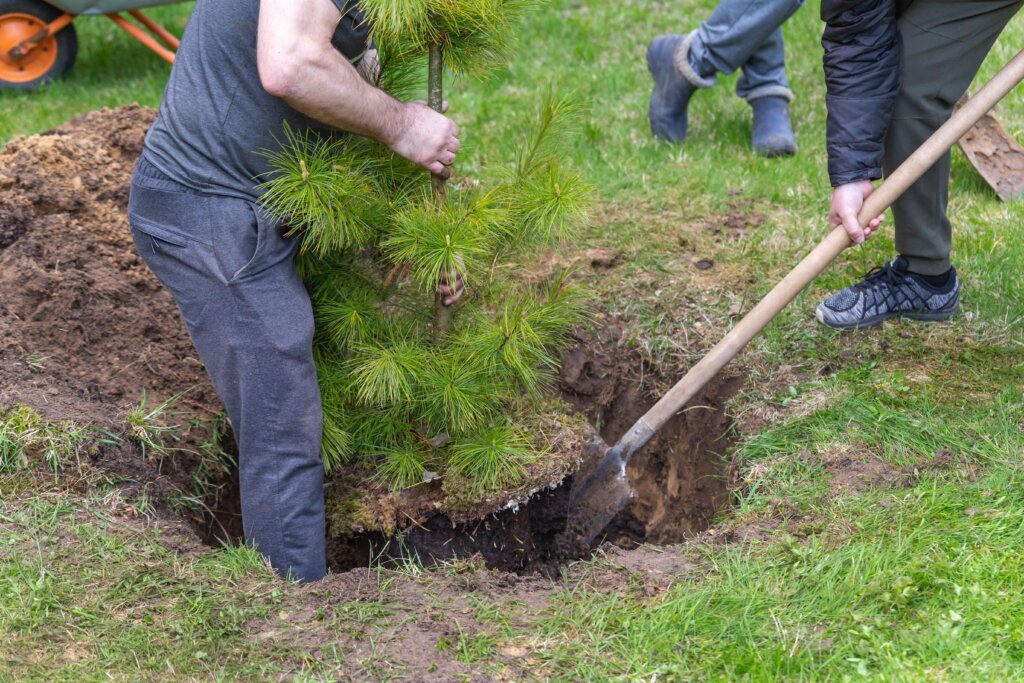According to the University of Minnesota Extension, fertilizer spikes offer a simple, targeted way to feed evergreens, delivering nutrients directly to the roots. While they may not replace all other fertilization methods, when used correctly, spikes can make tree and shrub care easier and more efficient. Learn how to maximize their benefits and keep your plants thriving year-round.
Key Takeaways
- Fertilizer spikes are slow-release sticks that feed trees and shrubs at the root zone for steady, months-long nutrition.
- Each spike has balanced N-P-K nutrients to boost roots, foliage, and color.
- They’re clean, easy to apply, and reduce runoff by releasing nutrients gradually.
- Insert spikes along the tree’s drip line, water after placement, and apply in spring and fall.
- Use tree spikes for magnolias and evergreens, shrub plant food spikes for dense growth, or outdoor spikes for mixed landscapes.
- Safe for most plants—just follow packaging details and avoid overuse for best results.
- Local tip: Pennsylvania homeowners can count on Terra Lawn Care’s experts for quality fertilization services and personalized care plans.
What Are Fertilizer Spikes?
Fertilizer spikes are pre-measured, slow-release sticks of plant food designed to feed trees and shrubs directly at the root zone. They contain balanced levels of nitrogen, phosphorus, and potassium to promote healthy root growth, lush foliage, and vibrant color throughout the growing season.
Unlike granular fertilizers or liquids, these spikes release nutrients gradually through the soil surface, ensuring continuous feeding for months. This makes them a great choice for Pennsylvania homeowners who want a low-maintenance option to fertilize trees and shrubs effectively.
For a complete breakdown of fertilizer types, visit our guide on Types of Fertilizers: The Complete Guide to Lawn and Garden Nutrition.
Why Fertilizer Spikes Work So Well
Fertilizer spikes stand out because they deliver nutrients directly where trees’ roots need them most. Here’s why they’re so effective:
Slow-Release Nutrients
Each spike is packed with slow-release nutrients that dissolve gradually, feeding your plants over time instead of all at once. This helps avoid nutrient runoff and ensures consistent feeding through rain and seasonal changes.
Root-Targeted Feeding
By placing spikes along the tree’s drip line—the circle beneath the outer branches—you’re targeting the active root zone where nutrients are absorbed. This method promotes deeper, stronger root growth and reduces waste.
Clean and Easy Application
Fertilizer spikes come with an enclosed plastic cap for easy insertion—no mess, no mixing. Just insert spikes into soft, moist soil around your trees or shrubs, and you’re done.
If you’re unsure which fertilizer type is best for your property, our lawn fertilization services can guide you toward a professional, soil-based solution.
How to Apply Fertilizer Spikes for Best Results

Applying fertilizer spikes correctly makes all the difference. Here’s a step-by-step guide for the best results:
- Locate the Tree’s Drip Line:
Measure about two feet from the trunk for small trees or use the edge of the outermost branches for larger ones. - Place the Spikes:
Using a mallet, insert spikes into the ground along the drip line, spacing them evenly. - Water the Area:
Water thoroughly to help nutrients penetrate the soil surface. - Timing Matters:
Apply in early spring to boost new growth and again in fall to strengthen roots before winter dormancy.
For more guidance on choosing the right formula for your yard’s needs, check out Choosing Lawn Fertilizer: How to Select the Best for Your Lawn. It’s a great resource for understanding which fertilizer type supports the healthiest seasonal growth for your trees and shrubs.
Fertilizer Spikes for Different Plants

Different plants require unique nutrient blends. Here’s how to choose and apply the right plant food spikes:
Tree Spikes
Use tree fertilizer spikes for deciduous and evergreen trees. These usually have balanced N-P-K ratios to support both foliage and root development. Magnolias, hydrangeas, and azaleas benefit from formulas designed for acid-loving plants.
Shrub Plant Food Spikes
For shrubs, look for shrub plant food spikes labeled for evergreens or flowering shrubs. They’re formulated to stimulate growth and maintain dense foliage without causing over-fertilization.
Outdoor Plant Food Spikes
If your yard features mixed plants and shrubs, use outdoor plant food spikes for broad coverage. These feed through slow-release nutrients and are ideal for larger landscapes.
When comparing fertilizers for your entire yard, see our resource on Granular Fertilizer: The Key to a Lush, Green Lawn.
Are Fertilizer Spikes Safe for All Trees?
Generally, yes—but moderation matters. Overuse can lead to over-fertilization, which can damage roots or cause nutrient runoff. Always follow the package instructions and refer to the label illustration for placement and spacing.
When used correctly, fertilizer spikes promote impressive plants, stronger roots, and longer-lasting color without harming your soil ecosystem.
Local Expertise You Can Trust
As a locally owned Pennsylvania company, Terra Lawn Care has been helping homeowners maintain healthy trees, shrubs, and lawns since 2003. Our in-house agronomist and certified technicians provide customized lawn fertilization services across the Tri-State area, ensuring the right nutrition for every yard and season.
Bottom Line: How to Fertilize Trees the Right Way
To fertilize trees effectively, use plant food spikes around the drip line closer to where roots absorb nutrients. Evenly apply spikes in fall and spring to keep trees growing strong. Avoid the mistake of placing tree spikes too close to the trunk—space them evenly for balanced nutrition and lasting results.
Need help choosing the right spikes or timing your application? Contact Terra Lawn Care for expert advice and personalized fertilization plans that keep your Pennsylvania landscape thriving year after year.
Frequently Asked Questions About Fertilizer Spikes
Most plant food spikes should be applied twice a year—once in early spring and again in fall. This schedule provides steady nutrition to your trees as they continue to grow through changing seasons. Always read the packaging and details for specific instructions, as recommendations can vary depending on the brand or tree type.
Yes. Plant food spikes and shrub plant food spikes deliver nutrients directly into the ground, feeding your trees and shrubs at the roots.
This helps maintain strong growth and vibrant foliage. Consistent use ensures that each tree receives quality nutrition for healthy roots and steady growth throughout the year.
For best results, use one spike for every two feet of your tree’s trunk diameter. Space them evenly around the center drip line where roots are most active.
This placement method allows the nutrients to reach deep into the soil, encouraging magnolias’ application and other tree species to thrive. Always check the description and packaging for exact spacing instructions.
Yes. Miracle-Gro tree spikes are effective for many trees and shrubs, including evergreens and flowering types like magnolias.
These spikes provide consistent feeding and are easy to store and use. Simply follow the application details provided on the packaging for the best results, and click to make your purchase from a trusted retailer offering verified quality lawn and garden products.



